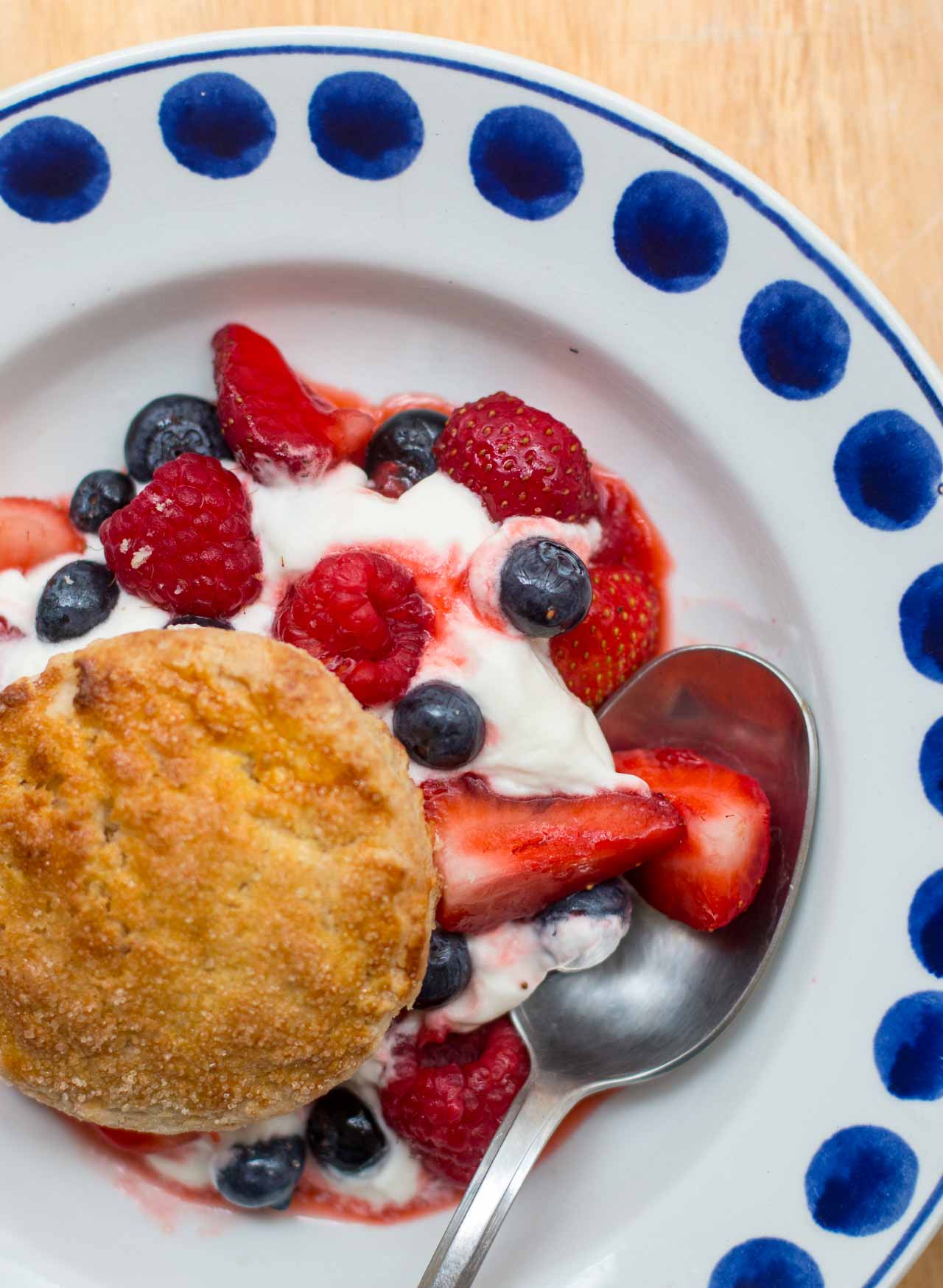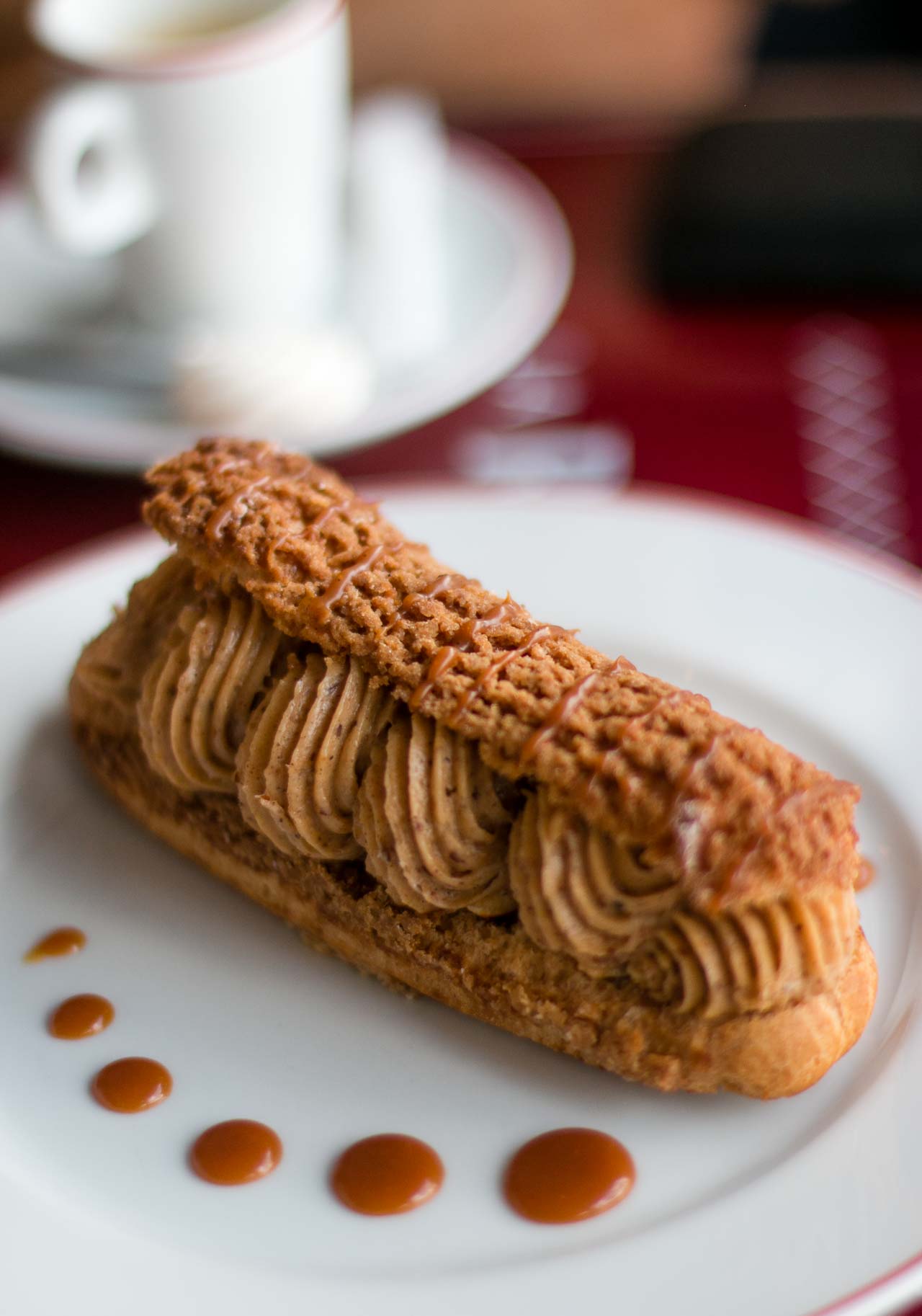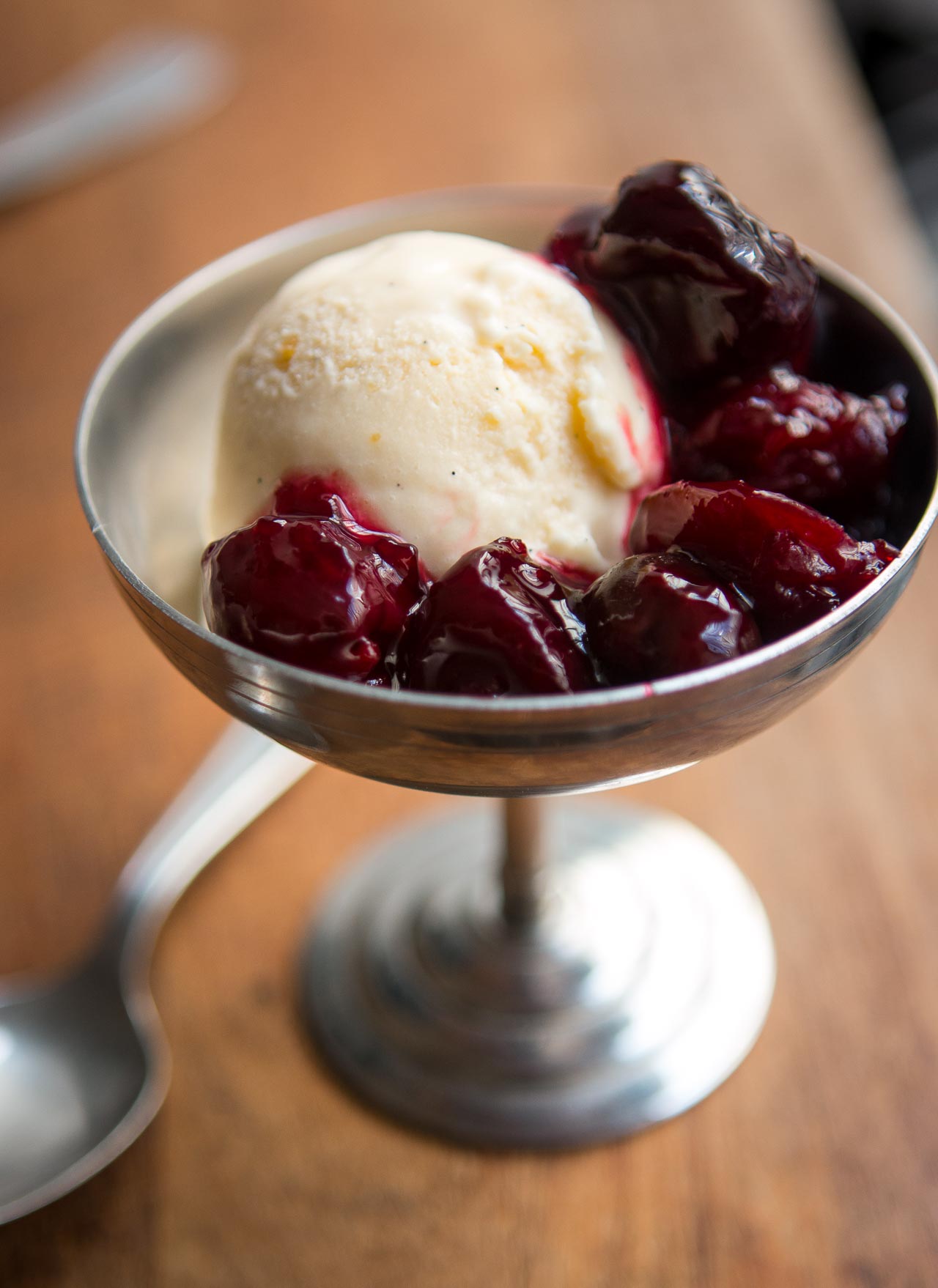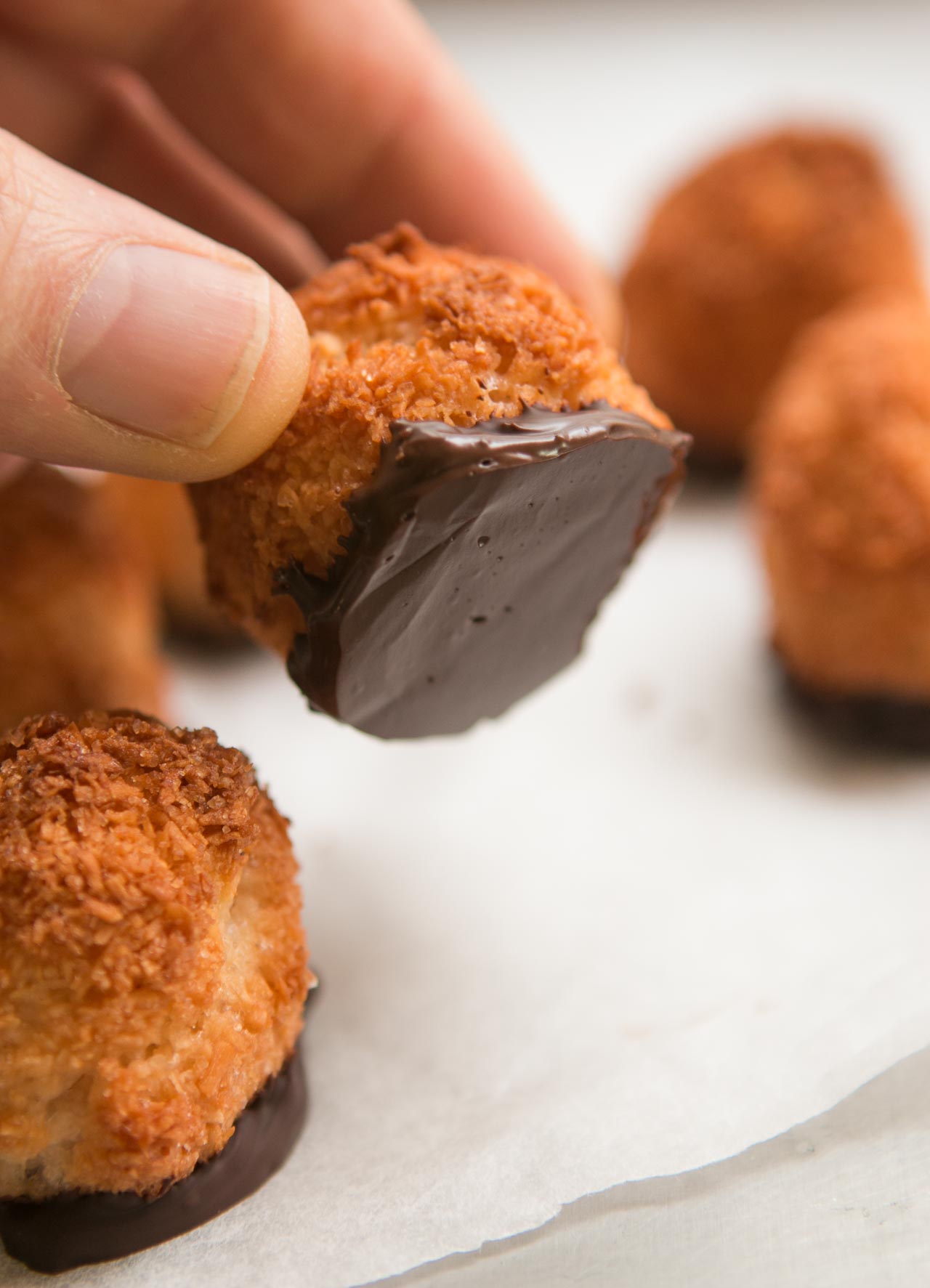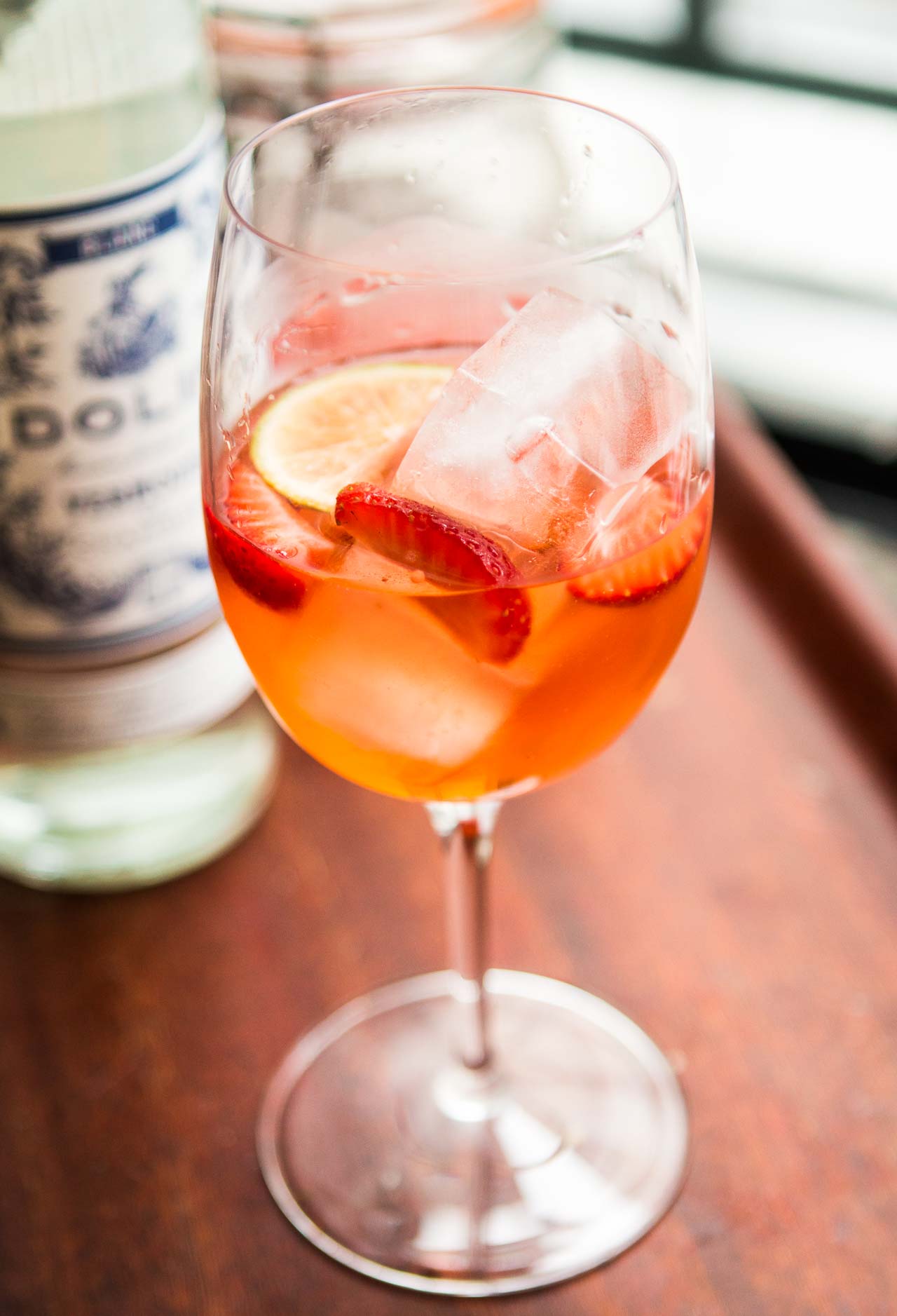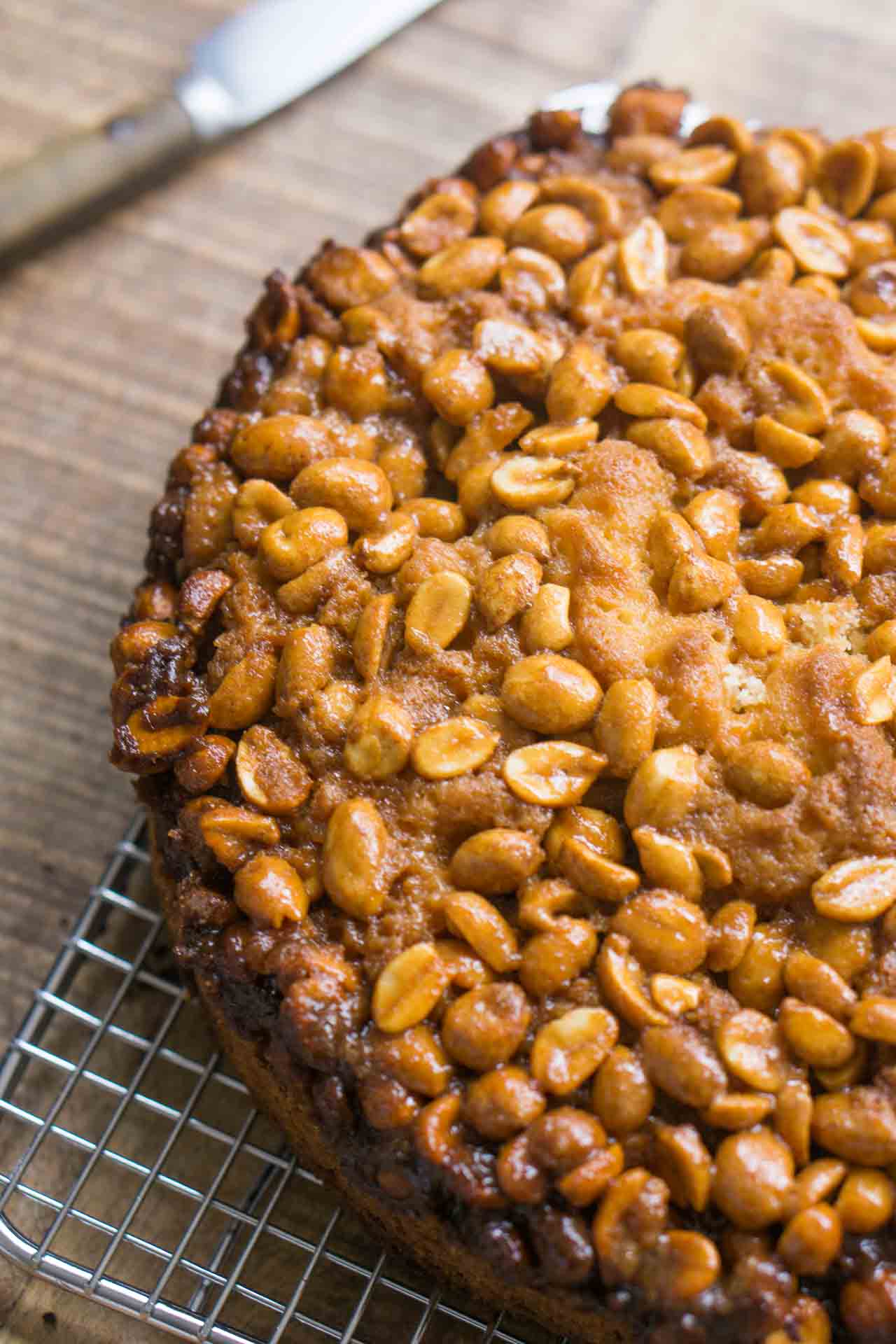Making Perfect Espresso at Illy
When I told a friend that I was going to Italy to learn how to make coffee, she responded, “You just dump the coffee into a filter and pour water over it. What else do you need to do?”
Well, since you asked, plenty.
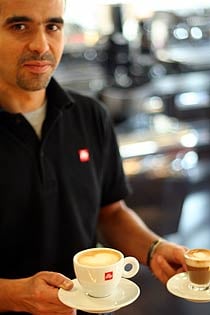
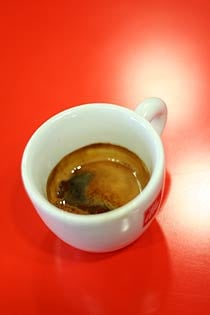
First of all, there’s an important distinction between ‘brewing coffee’ and ‘extracting espresso’.
Brewed coffee is steeping ground beans in hot water, which any fool like me can do, whereas making espresso involves a couple of crucial steps and the deft use of a high-pressured machine combined with several specific techniques. It’s not easy to make the perfect espresso, but anyone can make a pretty decent one, even using an inexpensive home machine.
And how do you know what a good espresso is?
It’s a very tiny cup of deep-brown liquid, just a couple of sips, not bitter-tasting, but rich, complex and lingering, which endures on your taste buds for 10-15 minutes afterward—one singular, perfectly extracted shot of true Italian espresso.
I was really anxious to visit Illy, since I’ve been having trouble getting just the right little shot to taste good at home. Mine was either too watery, or bitter and virtually undrinkable, even though I was using a very powerful espresso maker. But I was also curious why the espresso in Italy tastes so much better than it does anywhere else, even in the humblest caffè. So when Illy invited me to come to their roasting plant and Università del Caffè in Trieste, I cleared my calendar and jumped on a plane.
So what did I learn at Illy? I learned that anyone, even me, can pull a great cup of espresso at home.
Here are the 1, 2 and 3’s of it…
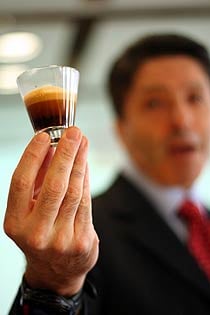
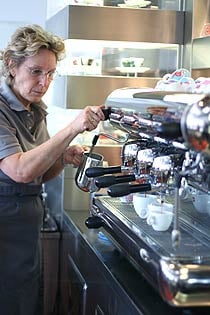
1. Start with good coffee.
This seems like a no-brainer. But I have a friend who said his vinaigrettes never tasted as good as he’d like them to. When I pointed out that you can’t make a good salad dressing with crappy olive oil from Trader Joe’s, neither can you make a good cup of espresso unless you start with good coffee beans correctly roasted and packed.
The best coffee is made from Arabica beans and at Illy, we tasted two espressos side-by-side; one made with pure Arabica beans and the other with a 50-50 blend of Robusta and Arabica.
The difference was astounding: The coffee brewed with Robusta was vile and smelled horrid, while the Arabica was intensely flavored, yet smooth and full. Because Italy never colonized coffee-growing countries, they weren’t economically tied to specific coffee-growing countries so historically, they were able to cull the best beans from around the world. Other countries, like France, colonized places like Cameroon, which are known for inferior Robusta beans and tend to use them, which is reflected in the poor-quality of coffee generally served around Paris.
Don’t believe packaging that says ‘100% Arabica’—it seems meaningless.
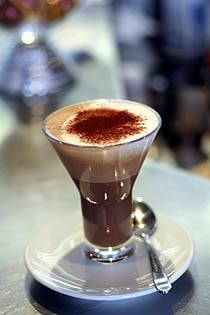

The trend towards single-origin products is rather misleading as well, since the best brands of coffee, like chocolate and some wines, combines various qualities of different beans (or grapes) to compliment each other to achieve the right flavor profile. The scientist at Illy advised that ideally, one must blend at least 4-5 difference beans to get a good flavor. Illy uses 9 different beans but constantly adjusts the roast and blend to adapt to various characteristics of the beans, depending on the seasons and environmental conditions.
In the lab, I watched them pick thought who looked like perfectly good green beans, one-by-one. But when they handed me a bean called a ‘stinker’ and asked me to take a sniff, one whiff was all I needed to know why that’s the international moniker for the rank bean they plucked out. It was moldy and cheesy, and they told me that just one bean like that could ruin an entire can of coffee.
As a baker, it would be similar to using a rancid nut in a batch of cookies. And if you’ve ever bit into a rank nut, you know what I mean. When I was starting out as a pastry cook, the chef made me eat one, and for twenty years afterward, I made sure no one got one in their dessert, believe you me.
But even if you can start with the best green coffee beans, you can ruin them by improper roasting, and you can forget getting a good cup of coffee from them. Many people complain Starbucks and Peet’s coffee tastes burnt, which is perhaps roasted that far to mask the flavor of inferior beans. The scientist at Illy, Marino Petracco, kept looking in my direction when talking about “That Starbucks coffee from California,” but I didn’t want to interrupt and tell him Starbucks was from Seattle.
Unlike what many people think, coffee beans roasted for espresso should not be ultra dark-roasted, which would obliterate any of the subtle flavors that emerge when roasting. Coffee beans destined for espresso should ideally be medium-roasted. Coffee beans can be roasted in as little as 90 seconds, or up to 40 minutes—too long degrades aroma and too little makes the beans bitter. And once roasted, in spite of what you might have been told, coffee should be stored at room temperature in a dark, airtight container. Humidity, light, and oxygen are the biggest enemies of coffee, so the damp refrigerator is not an ideal place to keep your coffee. The freezer’s alright, but if you let the coffee sit out for any length of time, condensation will form which can ruin the beans.
A previous reader queried if the Illy coffee he bought in the US was as fresh as what’s available in Italy, so I asked the Illy team who responded by taking me on a tour of the packing facility. They showed me how their coffee is ‘pressurized’, not just vacuum-packed. Each tin, which they fabricate themselves, is welded together and in a nearby machine, I almost had a regrettable accident when I heard a very, very loud explosion, which turned out to be a test run. Every so often a tin is removed from the welder and pressurized before it loudly explodes, to test the seal. (Note to self: If you’ve been drinking a lot of diuretic caffeinated beverages, use the men’s room before taking a tour of a coffee packing facility, since you never know what deafening surprises await. Especially if you’re only traveling with one pair of trousers.)
The difference between ‘pressurized’ over ‘vacuum-packed’ coffee is a dose of nitrogen gas gets added just before the container is sealed, which they say actually augments good aromas over time in the coffee, but which can augment bad flavors as well…which they told me is why no one else does it. They claim their coffee stays fresh for up to three years that way.
Be sure to check back here in 2010, and I’ll post the results of that test.
2. Understanding Espresso.
Perhaps the biggest surprise to me, which shouldn’t have been a surprise when you think about it, is that espresso is an emulsion; a liquid composed of stratified oils. Think salad dressing that separates as it sits, which has lost its emulsion. But a good shake brings it back. Chocolate, mayonnaise, gravy, and butter are other examples of emulsions.
Emulsions are lurking everywhere!
Since a coffee bean is roughly 12% oil, a hot (but not too hot), high-pressured water system can extract a nicely emulsified cup of espresso in 20-25 seconds. Too short, and it’s watery and insipid. Too long, and it’s thick but bitter. So timing is important.
Anywhere outside of Italy, I watch the barista make an espresso before placing my order. When in doubt, I order a macchiato, or espresso ‘marked’ with a dab of steamed milk, which neutralizes the acidity of a poorly extracted cup. A common mistake is to add more water, creating a caffè Americano actually increases the sensation of bitterness on your tongue and isn’t recommended, unless you add milk.
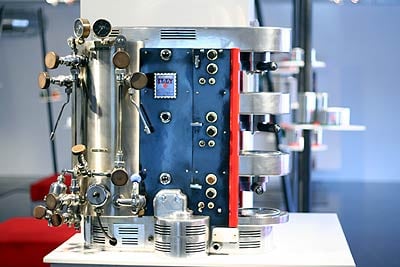
Although the espresso-maker was invented by the French, Francesco Illy refined it in 1935, adding compressed pressure to the process, which shortened the extraction time and reduced the bitterness in the finished espresso. (Gaggia invented the spring-lever machine in 1947 and Faema introduced a pump to push the water through in 1961.)
There are a lot of various machines available to make espresso, but it’s difficult to find a home machine that will do it as well as the professional models. And they had them all lined up at Illy’s Università del Caffè for me to take through their paces.
The inexpensive machines don’t have the high-pressure pumps needed to make a perfect espresso, but I was able to pull a very good cup in the smaller machines, including their Francis!Francis! X1 machine. The Illy barista, Michele Pauletic (who kept me fueled by so much espresso all weekend, I think I slept a total of 2½ hours) had me try that machine and I extracted an excellent espresso, similar in strength and quality to the huge powerhouse models they had lined up. These machines are inexpensive in Italy, although the prices do creep up when exported to the states. But due to voltage differences, the ones sold in the US are modified.
If anyone’s interested in buying a second-home in Trieste, I’m happy to stay there when you’re not in town. And teach you how to make espresso. Get in touch.
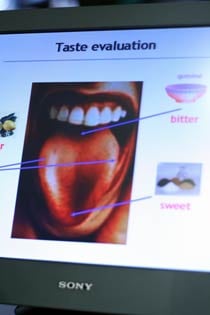
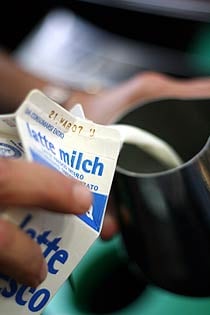
Because we all taste things differently depending on our physiology, and where things hit our tongues, most of us tend to crave sweet, fatty things, since their high-caloric value means nourishment. Whereas bitter usually send a danger signal to our brains, since many toxic substances are indeed tart and sour, explained Signore Pettracco, the scientist.
So a good espresso isn’t bitter (or burnt-tasting) and should be a thin syrup, 25 ml (about 2 tablespoons) and should have a layer of crema on top, a bit of foam which barista Michele told me was marked with what he called a “tiger’s stripes”, because of the wavy lines and mottled marks in the foam. Jeffrey Steingarten, in his obsessive-essay on espresso-making, says a good crema is notable if it’ll support a spoonful of sugar atop for 2 seconds before disappearing under the surface.
3. Extracting of the Perfect Cup
It’s generally recognized that there are three major factors you need to combine in order to make a good espresso: good beans, good water, and good grinding. (Thanks Alan for the exceptionally thorough link about water…I think!)
As mentioned, you can’t make good coffee from bad beans, but the same goes with water. If it’s too rich in calcium, magnesium, or other minerals, not only will it inhibit the pressure of the pipes in your machine after a while, but will affect the taste too. All you folks out there chugging bottled water should apply the same criterion to the water you use in your coffee.
Getting the grind right is just as important and unless you have a very powerful burr grinder, you’re better off having your coffee professionally ground for espresso since it’s impossible to get it ground fine enough in an inexpensive coffee mill (the kind with the small, whizzing blade.) If it’s too fine the water can’t get through, but if it’s too coarse, the water will flow through too quickly. So it needs to be just right.
Being a horrible snob, I thought the pods of espresso, pre-measured coffee packed in little pouches, were a lousy idea until I tried one at Illy, and I’m thinking of making the switch permanently. I’d had bad experiences with Lavazza pods, where the coffee was too-loosely packed and the water flowed through like manna.
And I normally buy pre-ground espresso and had mixed results. But I popped one of those Illy pods in my machine and I knew when a very thin stream of dark, inky liquid trickled out, I got it right. The Illy pods are indeed more expensive, but it’s still less-expensive and better-tasting, than the espresso that I get in most cafés around town.
Speaking of packing, it vital to tamp the coffee in the filter holder correctly.
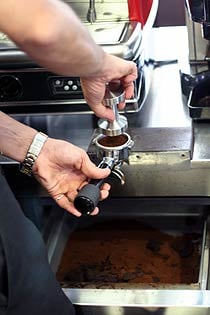
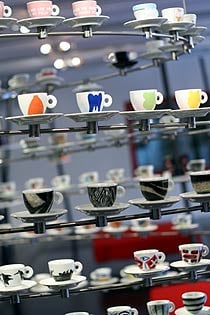
To make perfect espresso, use no more than 7 gr of coffee and one should tamp using 9-15 kg of pressure, which you can check using that long-neglected bathroom scale. (You should wash it first to get rid of any stinky-feet smell, which they didn’t mention at Illy, but I think it’s a good idea all the same.)
The ground coffee in the filter holder should be level and smooth with no gaps anywhere. A deft turn of the tamper should be used to polish it off after packing before extracting. It’s impossible to get the right amount of pressure using the plastic disk on the coffee grinder (“…like your Starbucks in California”, I can still hear ringing in my ears…), so I learned to press straight down, holding the filter holder off to the side of the countertop, not directly on it. I wanted to pocket the extremely heavy-duty tamper they had me use, but didn’t want to get busted on the way out. (Which would not be good for international relations.)
Curiously, they’re not available in France, but I do plan to pick one up when I’m in the states in June since it really did the trick. And they look pretty cool.
A perfect espresso should take 20-25 seconds to extract, although in a less-powerful home machine, it may take 18 seconds. When I tried the Francis!Francis! machine at Illy, as it passed the 18 second mark, everyone watching started panicking, rushing over telling me to “Stop! Stop!“; since the pressure is less than the bigger models the extraction time is slightly less.
Still, it tasted pretty darned good to me.
Espresso should also be made fast. Once the machine is heated up and ready to go, remove the filter holder, add the coffee, tamp it down, polish it off, and let ‘er rip.
One thing that really surprised me is that the espresso make in a double-filter holder is always better than that made in a single-filter, due to its sloping sides. Because a double-filter is intended to hold more coffee, the straight sides produce a more even extraction. That’s why if you go to a good espresso bar, they’ll often make two espressos and toss one out when they make yours. Or they’ll wait for the next customer to order one before making yours.
Which if you’re in Italy, will probably be a few seconds later. You may need to wait a bit longer if you’re in one of those coffee places “like you have in California…”
In the next installment, I’ll take you in the employee coffee bar at Illy, including the barista, who I’ve dubbed The Most Popular (and perhaps busiest) Woman in Trieste, and a look at some wacky packaging from the past, frothing milk, and the fine art of coffee-tasting…and spitting.
Related Links
10 things I just learned about coffee
Where to find a good cup of coffee in Paris







